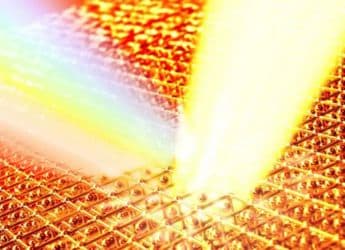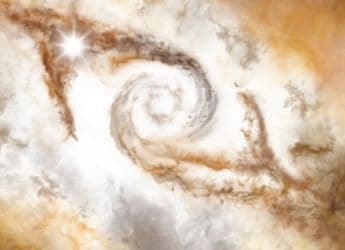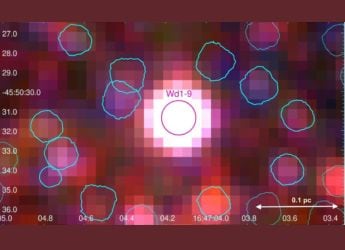- Home
- Glance
Tweaked Schrodinger Equation Bridges Gap Between Relativity and Quantum Mechanics
Tweaked Schrdinger Equation Bridges Gap Between Relativity and Quantum Mechanics

Physicists have long grappled with the perplexing divide between the bizarre laws of quantum mechanics and the classical principles of Einstein's theory of relativity. Now, a team of theoretical physicists may have taken a significant step towards reconciling these two seemingly incompatible theories by proposing modifications to the infamous Schrödinger's cat paradox.
The core tenet of quantum mechanics suggests that physical objects can exist in a superposition of multiple states until they are observed, at which point their state collapses into a definite value. This idea was famously encapsulated in Schrödinger's cat paradox, where a hypothetical cat inside a sealed box is considered both alive and dead until the box is opened and its fate is observed.
However, applying these quantum rules to the macroscopic world faces challenges. While quantum laws hold true for elementary particles, larger objects adhere to classical physics and are never observed in a superposition of states. This stark contrast between quantum and classical behavior presents a fundamental paradox in our understanding of the universe.
To address this conundrum, Matteo Carlesso and his colleagues proposed modifications to the Schrödinger equation, the cornerstone of quantum mechanics. By introducing terms that account for self-interaction within systems, they found that superposition breaks down more readily in larger systems, leading to spontaneous collapses of their states.
In this revised framework, there is no longer a distinction between objects being measured and measuring devices. Instead, all systems undergo spontaneous collapse at regular intervals, rendering large objects classical in appearance. Subatomic interactions with these systems contribute to the collapse process, leading to the acquisition of definite values for their attributes.
This modified approach offers insights into why our universe appears to follow classical laws of physics and lacks observable superposition. By describing a quantum universe that undergoes spontaneous collapse, the model explains the emergence of classical space-time geometry in our observable universe.
While the theory doesn't make new predictions about large-scale physical processes, it provides a framework for understanding atomic and molecular behaviour with minor deviations from standard quantum mechanics. Testing these modifications poses challenges, but ongoing efforts aim to explore their implications experimentally.
For the latest tech news and reviews, follow Gadgets 360 on X, Facebook, WhatsApp, Threads and Google News. For the latest videos on gadgets and tech, subscribe to our YouTube channel. If you want to know everything about top influencers, follow our in-house Who'sThat360 on Instagram and YouTube.
- Samsung Galaxy Unpacked 2025
- ChatGPT
- Redmi Note 14 Pro+
- iPhone 16
- Apple Vision Pro
- Oneplus 12
- OnePlus Nord CE 3 Lite 5G
- iPhone 13
- Xiaomi 14 Pro
- Oppo Find N3
- Tecno Spark Go (2023)
- Realme V30
- Best Phones Under 25000
- Samsung Galaxy S24 Series
- Cryptocurrency
- iQoo 12
- Samsung Galaxy S24 Ultra
- Giottus
- Samsung Galaxy Z Flip 5
- Apple 'Scary Fast'
- Housefull 5
- GoPro Hero 12 Black Review
- Invincible Season 2
- JioGlass
- HD Ready TV
- Laptop Under 50000
- Smartwatch Under 10000
- Latest Mobile Phones
- Compare Phones
- iQOO Z10 Turbo+
- Vivo T4R 5G
- Ulefone Armor 33 Pro
- Ulefone Armor 33
- Redmi Note 14 SE 5G
- Lava Blaze Dragon 5G
- Infinix Smart 10
- Realme 15 Pro 5G
- Samsung Galaxy Book 4 Edge
- Acer Nitro Lite 16
- Honor Pad X7
- Honor Pad GT 2 Pro
- CMF Watch 3 Pro
- boAt Valour Watch 1 GPS
- TCL C72K QD Mini‑LED TV
- Haier 43 Inch QLED Ultra HD (4K) Smart TV (43H6E)
- Asus ROG Ally
- Nintendo Switch Lite
- Haier 1.6 Ton 5 Star Inverter Split AC (HSU19G-MZAID5BN-INV)
- Haier 1.6 Ton 5 Star Inverter Split AC (HSU19G-MZAIM5BN-INV)













